
The sun shone brightly this past Monday, as I was driven through the periphery of Kinshasa to visit the only bonobo sanctuary in the world, Lola ya Bonobo. In Lingala, it means "Paradise of the Bonobos," and after a day there, I cannot disagree.
Bonobos were once considered a subspecies of chimpanzee, because of their similar environments and appearance. Many people can't tell the difference between the two even now, but their primary difference is in their behaviors. Bonobos in the wild are separated from chimpanzees as well by the mighty Congo River, which is impassable, though I'll no longer say that most great apes avoid water!
The bonobos of Lola are remarkable in their affinity for water. The babies play in it as though they were neighborhood kids in the fire hydrant. And even the adults on the edge of this river loll in the water, blowing bubbles, sprawling languidly, and splashing around.
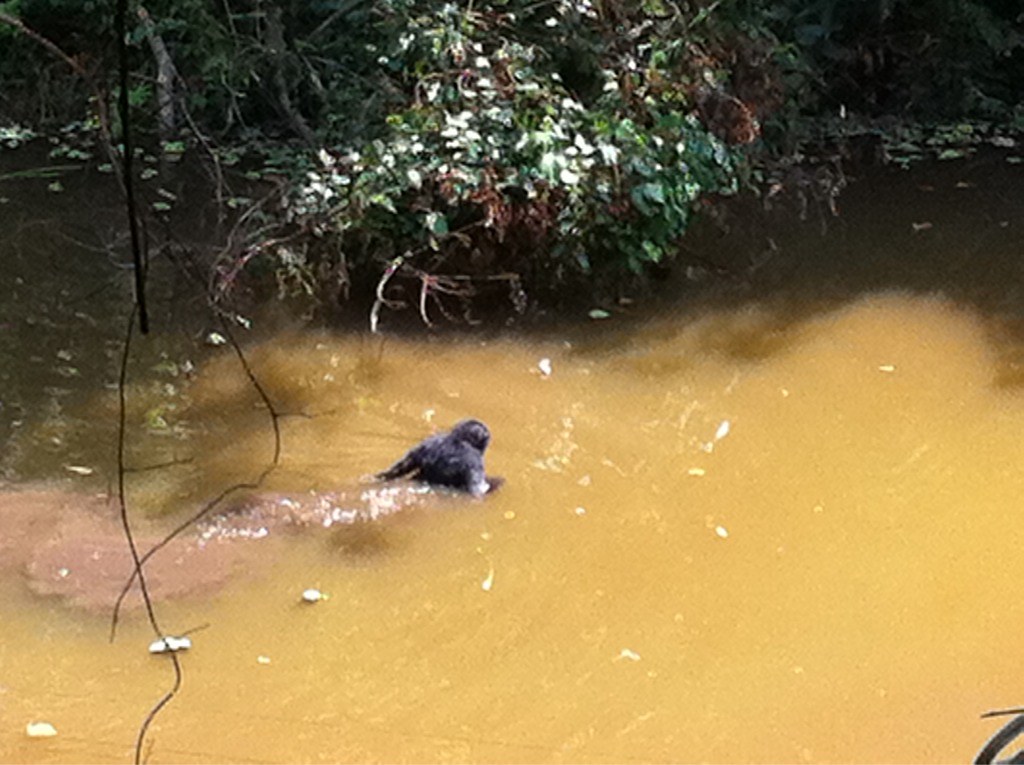
It's a behavior also seen sometimes in the wild, but having worked with almost exclusively chimpanzees these past few years, who tend to avoid water entirely, it was so funny to see!
Though, considering the heat of the day, I can't say that I blame them! I was nearly ready to get into the river too!
A lot of the day was consumed with behavioral observation, sussing out the little differences between these bonobos and my chimpanzees. Amongst the babies within the nursery, it didn't seem that different. Play-stomping around, sprawled in their mama's laps, chasing one another back and forth while swinging from anything and everything, I missed my chimp kids, now at Lwiro, terribly.
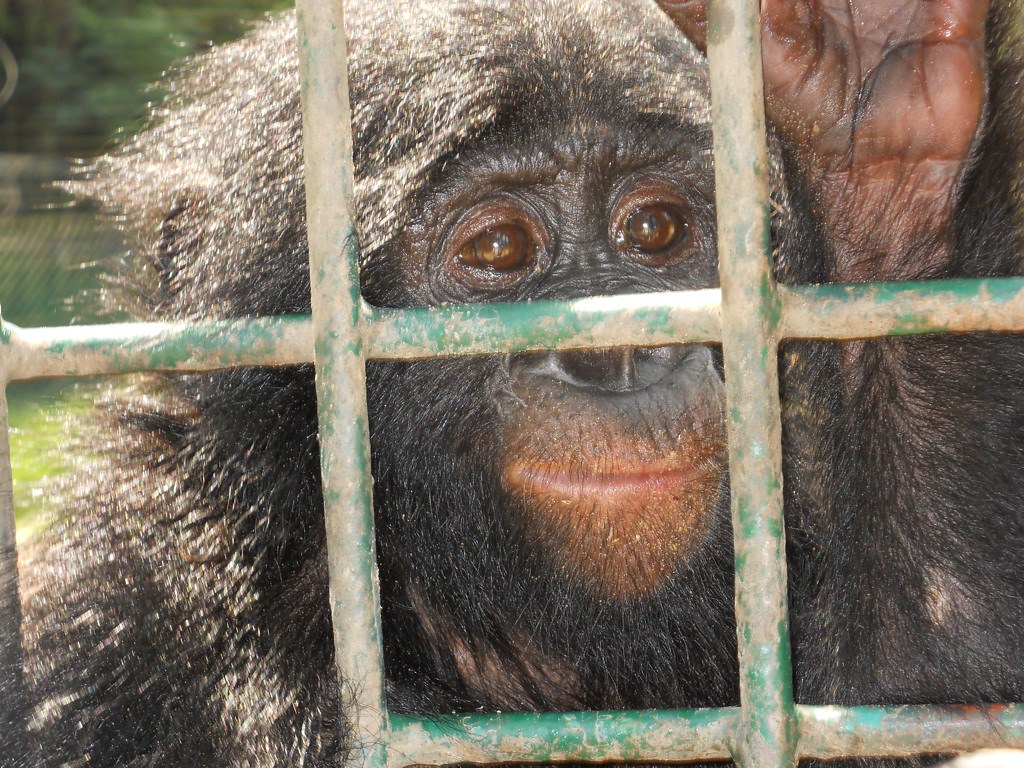
I spent more time by the fence of one of the adult enclosures, watching a group interact as their waited for their 15h feeding.
The group was broken into a much smaller pod than the 21 bonobos who filled the enclosures,and as they waited in the grassy shade along the bank of the river, there was a calmness about them as they groomed and played and frolicked at the water's edge.
Chimpanzees in captivity tend to get pretty agitated during this period, and there's lots of screaming and intragroup conflict as the tension rising from anticipation becomes overwhelming. Carrots! Mangos! TOO MUCH EXCITEMENT! And excitement becomes tension. And tension becomes fear, which leads to hate, which of course leads to the dark side.
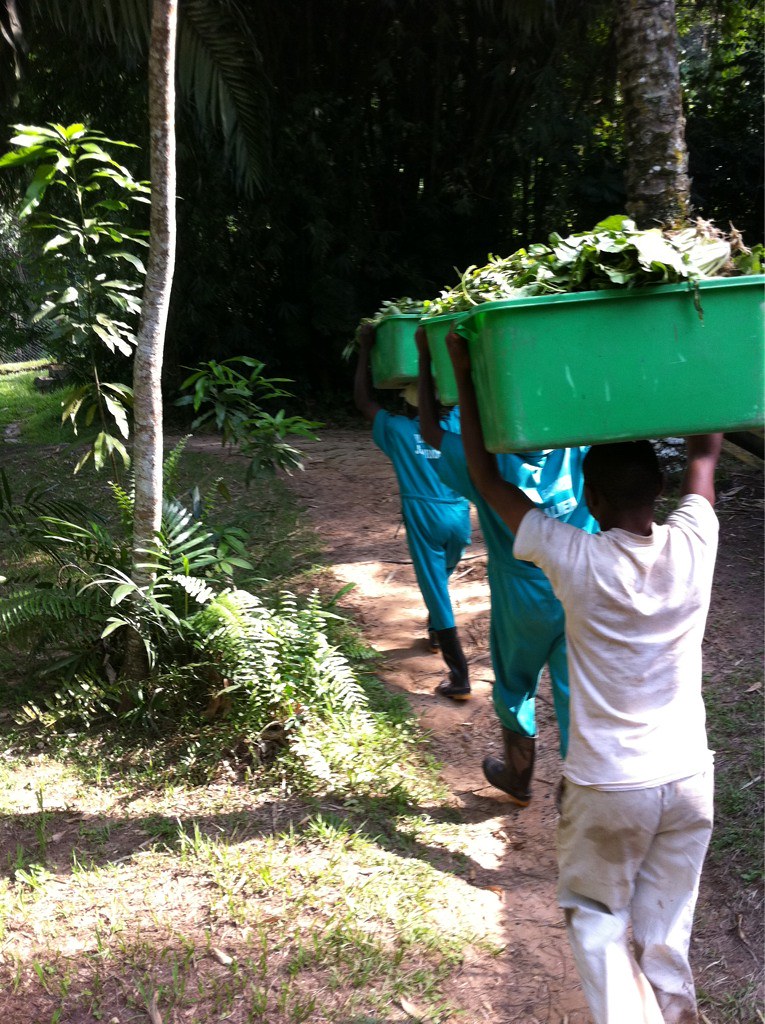
So imagine my amazement as the food bearers came, loaded with yummies and the bonobos were silent! There was no fighting, no screaming, no wild displays, as they casually ambled over closer to the fence to get their grub.
It was lovely to see such a peaceful society, and yes, bonobos are certainly famous for adhering this peace with a careful balance of sexual favors.
It's sort of funny that it makes bonobos "famous" in a way, as though it's some sort of tawdry nastiness, some sort of National Geographic-prescribed porn. But honestly, seeing the little group at Lola, and comparing them to the great deal I know of chimpanzees in captivity, I can't say it's a bad strategy.
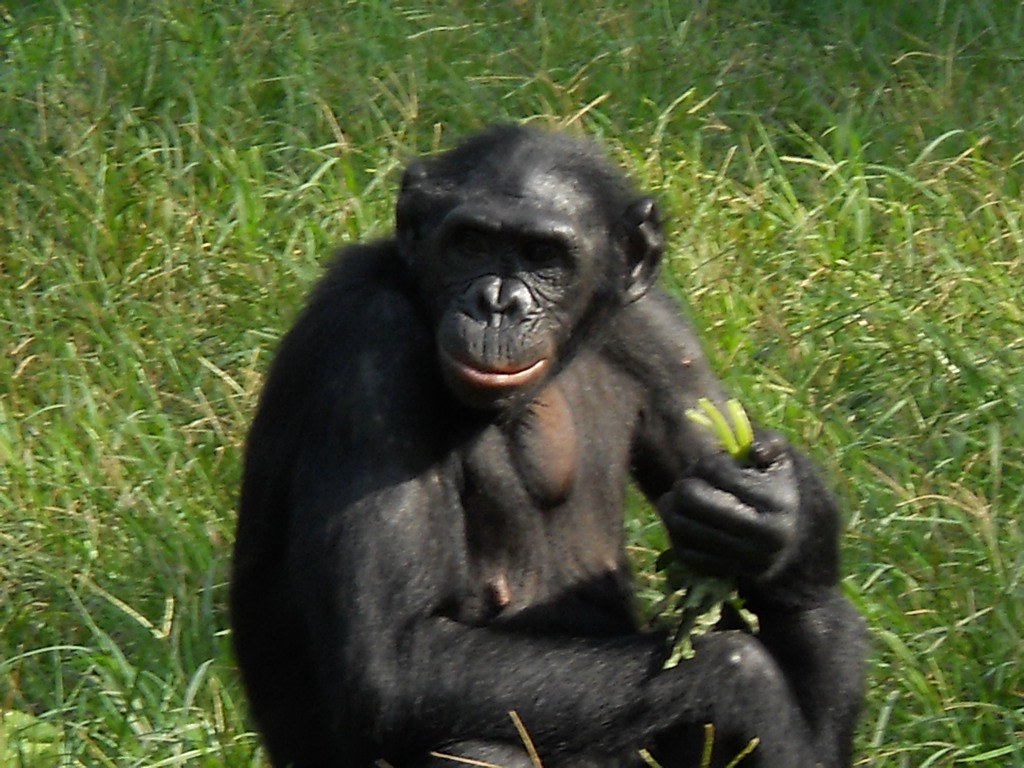
Humans develop attachments and do favors for those with whom they're intimate, so it makes sense that, within a group, if you want to tighten your bonds to your group mates that you engage in a little hanky panky. A little Charles Manson-esque, perhaps, but it's really the chimps and not bonobos who are out killing Sharon Tate.
This reliance on sexuality for group peace and prosperity ends up sort of altering a lot of the standards I've become accustomed to in sanctuary management.
Typically in any great ape sanctuary, resources are already taxed by the influx of orphans and therefore reproduction is inhibited through the use of contraceptive implants. With bonobos however, the use of implants has also affected the estrous swellings of bonobos, which are understandably crucial to their social bonds since sex is so integral in their society!
For me it was so interesting to see how behavioral differences so impact the management of such otherwise similar apes.
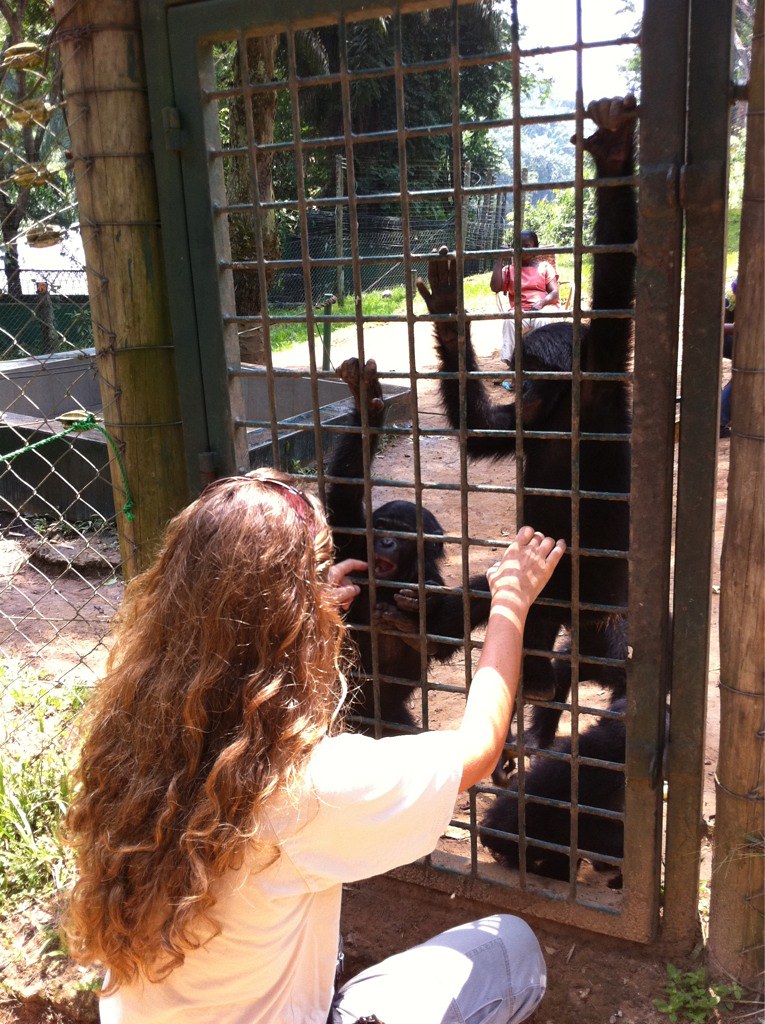
Overall, the day was absolutely magnificent. Claudine and Fanny, the onsite vet and assistant project manager, have done such a splendid job with Lola. Any sanctuary ends up being a huge undertaking, to ensure the safety not only of the primates within, but the human primates as well! The compromise between things like protecting the bonobos from visitors' diseases versus having the visitors get a real lasting experience to better their understanding of bonobos are huge issues, and Fanny is handling them with aplomb.
I hope to get a chance to go back, and that this entry has encouraged others to learn more about some of our closest cousins! For more information about Lola Ya Bonobo, please visit www.lolayabonobo.org
- Posted using BlogPress from my iPad
Location:Avenue Colonel Mondjiba,Kinshasa,Democratic Republic of the Congo
2 comments:
Seriously, we need more societies based on sexual favors. I'm just saying.
Also, YOU THINK CHARLIE'S THE STAIN, BUT THAT'S ALL THAT BRAINWARSH! I TOOK YOUR MIND IN ANOTHER GAME YOU DON'T KNOW ABOUT! I'M INSIDE YOUR CHILDREN!
Sorry, you mentioned Manson. It does that to me.
(be safe)
I think a baby bonobo should be sold from the sanctuary as pets. They will make great pets. Get over there humans, they are animals. The only problem is they'll want to have sex with you.
Post a Comment